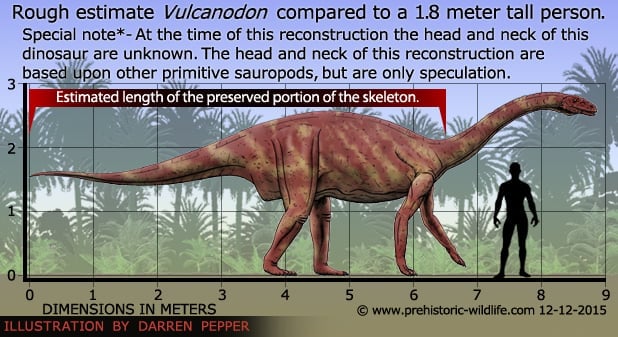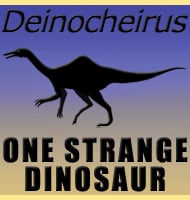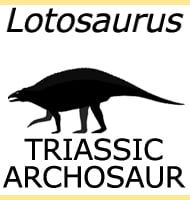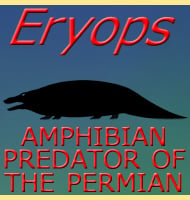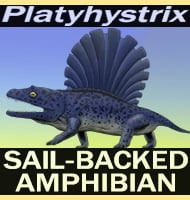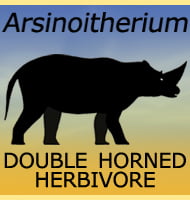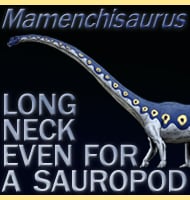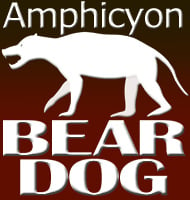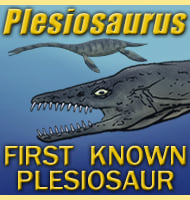In Depth
Vulcanodon is easily one of the more popular dinosaur genera, and one that has had a number of ‘firsts’ attributed to it. However, our understanding of this genus and changed considerably since it was first described in 1972. The name Vulcanodon means ‘volcano tooth’ and is a reference to the discovery of Vulcanodon between two Jurassic aged lava beds (long cooled down). The word volcano is derived from the latin vulcano, which in turn is derived from Vulcanus, more commonly known in English as Vulcan, the ancient Roman god of fire.
The post cranial remains of Vulcanodon were first found in 1969 by B. A. Gibson on a small Island in Lake Kariba of Zimbabwe (at the time known as Rhodesia). Lake Kariba is actually an artificial lake and reservoir created by the construction of the Kariba Dam, and the location where the fossils were found is simply known as Island 126/127. The remains were collected over the course of three expeditions in October 1969, and March and May 1970. Later in 1970 brief notes about the fossils were presented to a symposium in Cape Town, South Africa. No more public information about the fossils appeared until their formal scientific description was released in 1972.
When first described by Michael Raath in 1972, Vulcanodon was marked down as a prosauropod (in more modern terms, a sauropodomorph) dinosaur on the basis of the form of the pelvis and the teeth, the latter of which were suited to processing meat and hence indicating an omnivorous diet. The original explanation for these teeth being found at the pelvis was relocation from a death pose commonly seen in dinosaur remains. This is caused by the contraction of the tendons in the neck after death and during decomposition which causes the neck and head to arc backwards to look like they are curving over the back. These teeth however are now known to have been left behind by a theropod dinosaur and not the Vulcanodon, and were most likely left behind when said theropod was feeding upon the body of the Vulcanodon.
The pelvis of Vulcanodon is very much like those of sauropodomorph dinosaurs, though in this case it also seems to have been a proverbial ‘red herring’. The true nature of Vulcanodon being a sauropod was indicated in a 1975 paper by Arthur Cruickshank who noted that the fifth metatarsal (one of the foot bones) is the same length as the others,a feature seen in sauropods, not sauropodomorphs. With this more attention was given to the other parts of the skeleton, and with the exception of the pelvis, everything fitted a sauropod body form. Today, Vulcanodon is recognised as a potentially transitional sauropod which gives us some clues as to how sauropodomorphs evolved a larger, quadrupedal body form to become the first sauropods, the pelvis being an archaic feature that had remained in Vulcanodon, but would disappear from later sauropod forms. With Vulcanodon now correctly described as a sauropod, it became recognised as the earliest known appearance of a sauropod dinosaur. This is because the fossil bed that the Vulcanodon holotype was found in was believed to date to the early Hettangian, possibly the Triassic/Jurassic boundary. Two things have happened since this time though which now tell us that Vulcanodon was not the first sauropod to appear on the face of the planet. The first is rather simply the 2000 description of Isanosaurus from Thailand, which is a sauropod known to have lived around the Norian/Rhaetian stages of the Triassic, comfortably before the Hettangian stage of the Jurassic. The second is a study conducted by Adam Yates in 2004 that covered the lava beds that Vulcanodon was found in. These beds cannot be accurately dated with radiometric techniques, but the weathering upon them indicates that they are of the same age as other lava beds in the Karoo Basin which were laid down over a course of about one million years during the Toarcian period of the Mid Jurassic. This study then means that the Vulcanodon genus roughly lived about one hundred and eighty million years ago (give or take a few million years) instead of about two hundred and forty-five million years ago. Given the slight mix of sauropodomorph features such as the pelvis, and Vulcanodon may even be a late surviving transitional form.
When Vulcanodon was realised to be sauropod, and at the time thought to be a very early one, palaeontologists considered the possibility of creating a new group of sauropods. This finally happened in 1984 when Michael Cooper created the Vulcanodontidae. This group was primarily centred around Vulcanodon as the type genus, hence the name usage, and Barapasaurus from India, though the genera Zizhongosaurus and Ohmdenosaurus have also been included within this group by others. The first problems started with Zizhongosaurus and Ohmdenosaurus which are known from remains that are so fragmentary that not all palaeontologists are convinced about the validity of these genera. This left Vulcanodon and Barapasaurus together, but then in 1995 a study by Paul Upchurch revealed that Barapasaurus was quite a bit more advanced than Vulcanodon, and therefore cannot be kept in the same group. This left Vulcanodon all on its own, and since you need more than one of anything to have a group, the Vulcanodonidae fell into disuse by the majority of palaeontologists.
Then in 2004 a new genus of sauropod called Tazoudasaurus was named from fossils discovered in Morocco. Also known from partial remains, Tazoudasaurus is noted for only really differing from Vulcanodon only in the form of the vertebrae. This has not only led to suggestions that Tazoudasaurus and Vulcanodon are closely related, but it has also seen some (but at the time of writing not all) palaeontologists recognising the Vulcanodontidae as a valid group again, This time with Vulcanodon and Tazoudasaurus as the main genera, but occasionally also seeing the inclusion of Zizhongosaurus again, though this genus is still considered dubious by many. One of the signature features of sauropod genera in this group is that members must have a particularly narrow sacrum, the part of the hip where the sacral vertebrae are sandwiched between the ilium bones.
As a living dinosaur, Vulcanodon would have been a very small sauropod dinosaur, and one that would not be classifiable with the ‘true sauropods’ that would soon become the dominant sauropod form a little later in the Jurassic. This is not to say that Vulcanodon was not a sauropod, it was, just that the sauropods are broken down into groups for easier classification amongst genera, and Vulcanodon is considered to be too primitive to be grouped with forms such as Cetiosaurus and Apatosaurus.
Although not perfectly adapted to a quadrupedal posture, Vulcanodon almost certainly went about in one. The fore limbs are three quarters of the length of the hind limbs, meaning that the back would have been vertically level to maybe slanting slightly down towards the neck. Vulcanodon also had a claw on the hallux (first toe) of the foot, another feature common to sauropodomorphs, but the second and third toes of Vulcanodon had claws that were wider than they were long. At the time of writing these foot claws are only seen in Vulcanodon and Tazoudasaurus.
Analysis of the fossil location of Vulcanodon suggests that in life these sauropods lived in very arid environments, possibly feeding upon the plants that sprang up around watering holes or perhaps feeding excessively during wet seasons and surviving more upon fat reserves during the dry season. This is of course presuming that the body was not deposited to said environment by means of seasonal flood water, but only the discovery of new Vulcanodon fossils and analysis of their fossil sites can find that out.
Vulcanodon is often quoted as being six and a half meters long, but this is actually the estimated length of the preserved portion of the skeleton which does not include the neck or skull. How long Vulcanodon was specifically would depend upon the length of the neck, which until further fossils are found, can only really be guessed at. Still, Vulcanodon was certainly within the predatory scope of the larger theropod dinosaurs of the time, possibly those like Berberosaurus, remains of which were found nearby Tazoudasaurus further North in Morocco. It is not known what genus the theropod teeth found with the Vulcanodon fossils belonged too, but they do reveal the presence of meat eating dinosaurs where the body of this individual Vulcanodon came to rest.
Further Reading
- Fossil vertebrate studies in Rhodesia: a new dinosaur (Reptilia, Saurischia) from near the Triassic-Jurassic boundary - Michael Raath - 1974. - A reassessment of Vulcanodon karibaensis Raath (Dinosauria: Saurischia) and the origin of the Sauropoda - Michael R. Cooper - 1984. - The Evolutionary History of Sauropod Dinosaurs - Paul Upchurch - 1995. - First record of a sauropod dinosaur from the upper Elliot Formation (Early Jurassic) of South Africa - Adam M. Yates, John P. Hancox, Bruce S. Rubidge - 2004. - Integrating ichnofossil and body fossil records to estimate locomotor posture and spatiotemporal distribution of early sauropod dinosaurs: a stratocladistic approach - Jefferey A. Wilson - 2005. - Anatomy and phylogenetic relationships of Tazoudasaurus naimi (Dinosauria, Sauropoda) from the late Early Jurassic of Morocco - Ronan Allain, Najat Aquesbi - 2008.
